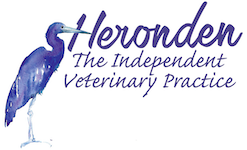Understanding Orthopaedics in Veterinary Practice: Caring for Animal Mobility
Orthopaedics is a vital branch of veterinary medicine focused on the musculoskeletal system—bones, joints, ligaments, tendons, and muscles. Just like humans, animals can suffer from a variety of orthopaedic conditions that impact their mobility, comfort, and overall quality of life.
From fractures and joint issues to congenital deformities and age-related degeneration, veterinary orthopaedics plays a key role in diagnosing, treating, and managing these problems to help animals live active, pain-free lives.
Common Orthopaedic Conditions in Animals
Fractures and Trauma
Accidents are one of the leading causes of orthopaedic injuries in animals. Falls, car accidents, or rough play can lead to broken bones, dislocated joints, or ligament tears. Treatment often involves surgery, splints, or advanced fixation techniques.
Hip Dysplasia
A common genetic condition, especially in large dog breeds, hip dysplasia occurs when the hip joint doesn’t develop properly. It can lead to arthritis and chronic pain. Treatment ranges from lifestyle management and medication to total hip replacement in severe cases.
Cruciate Ligament Tears
Similar to ACL injuries in humans, cranial cruciate ligament (CCL) tears are common in dogs and can cause lameness, swelling, and joint instability. Surgical repair, such as TPLO (tibial plateau leveling osteotomy), is often recommended.
Arthritis and Degenerative Joint Disease
Senior pets often suffer from osteoarthritis due to wear and tear on their joints over time. Management includes weight control, anti-inflammatory medications, physical therapy, and supplements like glucosamine and chondroitin.
Luxating Patella
Seen frequently in small dog breeds, this condition involves the kneecap (patella) slipping out of place. Depending on severity, it can be managed with physiotherapy or corrected with surgery.
Diagnostic Tools in Veterinary Orthopaedics
Veterinary orthopaedics relies on a range of diagnostic techniques:
- X-rays (radiographs): Standard for assessing bone fractures, joint alignment, and arthritis.
- CT scans or MRI: Advanced imaging for detailed soft tissue and bone structure evaluation.
- Gait analysis and orthopedic exams: Help assess pain, mobility, and limb function.
Treatment Approaches
Treatment options vary depending on the condition, severity, and the animal’s overall health. Common orthopaedic treatments include:
- Surgical interventions: Such as fracture repair, joint replacement, or ligament reconstruction.
- Physical rehabilitation: Underwater treadmills, massage therapy, and laser therapy can accelerate healing and reduce pain.
- Medical management: NSAIDs, joint supplements, and regenerative medicine (like stem cell therapy) are increasingly used.
- Lifestyle modifications: Diet, exercise, and home adjustments can significantly improve mobility in animals with chronic conditions.
The Role of Preventive Care
Preventing orthopaedic problems is just as important as treating them. Key preventive measures include:
- Maintaining a healthy weight
- Avoiding overexertion in young, growing animals
- Providing proper nutrition for bone and joint development
- Regular check-ups for early detection of joint issues
Final Thoughts
Orthopaedic care in veterinary practice is not just about fixing broken bones—it’s about restoring movement, reducing pain, and enhancing the quality of life for our animal companions. With advancements in veterinary medicine, many animals with serious orthopaedic issues can recover and thrive with the right care and support.
Whether your pet is limping, slowing down with age, or recovering from an injury, a veterinary orthopaedic specialist can help guide the path to healing and mobility.
